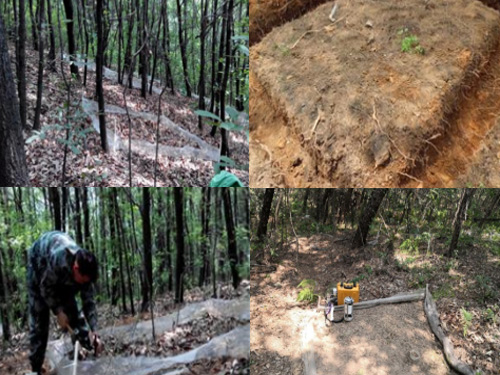Introduction
In order to better predict the response of terrestrial ecosystems to global climate change, it is necessary to have a good grasp of soil carbon (C) pools and C cycle processes. Soil C pools in forest ecosystems mainly come from the decomposition of litter and roots. The soil C pool is huge, but difficult to detect significant changes under natural conditions in short term. Adding or removing litter and root exclusion (DIRT experiments) can artificially change the C input to study the soil C pool and C cycle. Besides, adding litter and root exclusion have a stimulating effect on the soil C pool and C cycle. There is a lack of quantitative research on the effects of different C input pathways on C pools and C cycles in different forest ecosystems. The subtropical-warm temperate transition zone has a large forest area, is sensitive to climate change, and plays a key role in the global C cycle. Therefore, the research in this area is great significance to quantify the contribution of different C input pathways to soil C pool and C cycle, and is great implication to the prediction of global change and model simulation.
Questions
(1) The effects and mechanisms of soil carbon input pathways (litter or root) on soil respiration and soil carbon pool composition.
(2) Under different forest ecosystem types, how much does changing the carbon input method affect the various components of soil respiration?
(3) How does changing carbon input affect the microbial community at the interface between litter and soil?
(4) Are there any interactions between the two carbon input pathways on the soil carbon pool and carbon cycle?
Materials and methods
The experiment selected three forest types: coniferous, broadleaf and coniferous and broad-leaved mixed forest. Each forest type adopts a random block design with a total of 24 plots. According to the size of the tree gap, each plot was divided into two 2 m × 2 m subplots with 3 m distance between the subplots. Each forest type consisted of 6 treatments, including: 1) control, 2) litter removal, 3) root exclusion, 4) litter removal and root exclusion, 5) litter addition, 6) litter addition + root exclusion. Each treatment had four replicates.


